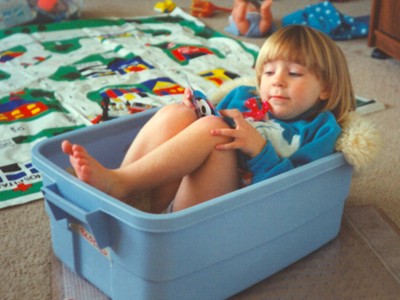
We humans frequently use items to solve our emotional, physical, and mental needs. We acquire entertainment, comfort, sustenance, and education most of the time through the purchasing power of money. We all know money can’t buy everything. As the Beatles proclaim, “Money Can’t Buy Me Love” and most of us have had a realization about the real value of community despite the fact that there isn’t an associated price tag.
However, some items have a price tag that also need not be bought, like the Barbie airplane I spoke of last week. Opportunity cost isn’t the only reason I didn’t buy the plane. I also didn’t buy the plane because of something my dad said.
“You know, Megan,” he began, as he lifted the box back onto the top shelf of the Barbie aisle, “with the tiny food from your toy refrigerator and our blocks at home, I bet we could make a pretty good airplane at home. We could make reclined seats and fly them around on our writing boards.”
One reason that many people buy things that they could have done without is “functional fixedness,” the cognitive bias to use an object in the traditional way an object is used. For example, Snuggies seem to have been born from people’s functional fixedness with robes being worn the proper way.
In my airplane situation, my way of thinking had fixed the blocks into the use of building structures, like houses and bridges. However, with the creative thinking of my dad, we overcame functional fixedness, saved one-hundred and twenty dollars, and still got an airplane.
We went home to our blocks and tiny food to construct an airplane, which we used to fly Barbie and Ken’s family to a beach vacation. In future weeks at Toys ‘R’ Us, my dad challenged me to see how objects I already owned could be used to replace the objects I was thinking about buying.
He taught me that with a little creativity, I could see the possibility in common objects so that I need not purchase a tool to accomplish everything that I want to do. Many items can be made through alternative means for much less than buying them.
Teach children to prevent unnecessary purchases by making efforts to help them see other possible solutions.